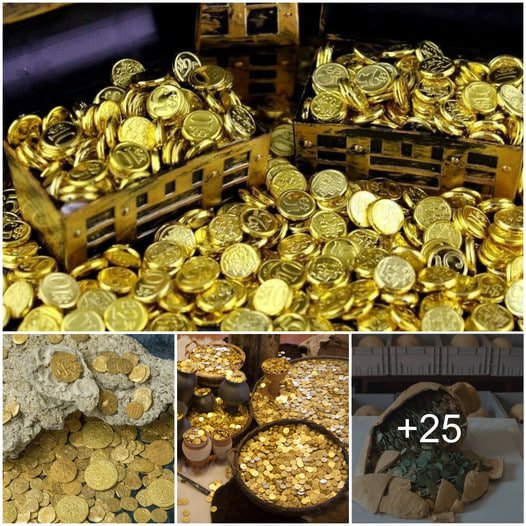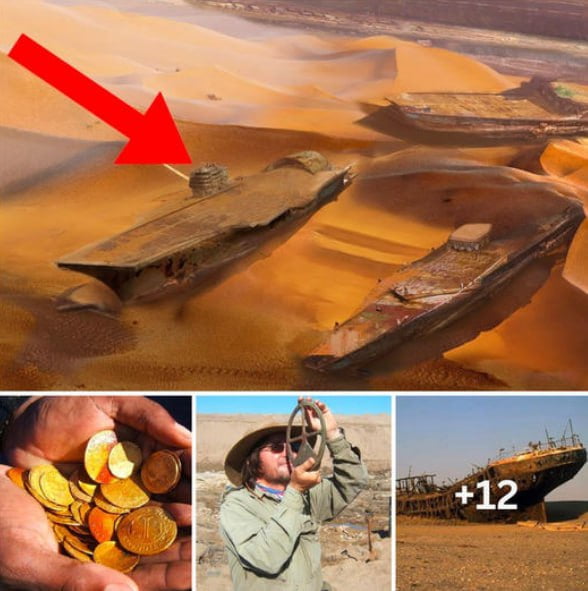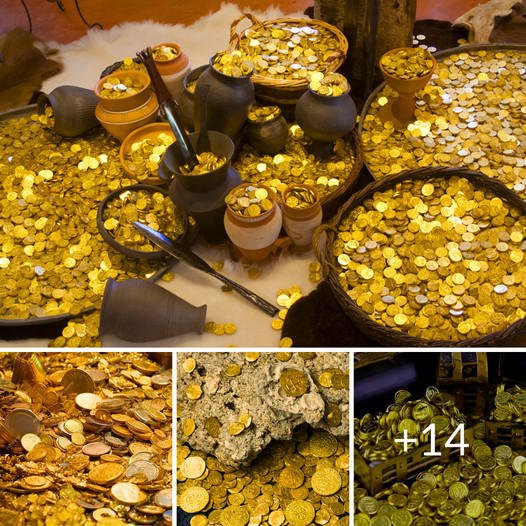Recently, an extraordinary and captivating discovery has taken place in Vindelev, near Jelling, unveiling one of the most remarkable treasures in Danish history. This exquisite assortment of gold, boasting an impressive weight of almost 1 kg, includes magnificent medallions resembling saucers and has resurfaced after an astonishing 1500 years beneath the Danish soil.
The fortuitous unearthing of this treasure can be attributed to Ole Ginnerup Schytz, who had recently acquired a metal detector and received permission to explore his old classmate’s land. In a stroke of extraordinary luck, Schytz stumbled upon one of the most significant gold troves in Danish history during his meanderings.
Following this remarkable find, archaeologists from Vejlemuseerne, alongside experts from the National Museum and with the assistance of funding from the Agency for Culture and Palaces, took charge of an extensive excavation process. Their collaborative efforts unveiled that the treasure had been concealed within a longhouse in a village approximately 1,500 years ago. Through the meticulous study of collected samples and data, these archaeological marvels will unearth invaluable insights into the interconnectedness and circumstances that led to this treasure’s burial by an Iron Age chieftain.

A leader in Vindelev
The unearthing of the vast quantity of gold suggests that Vindelev was a prominent hub of influence during the late Iron Age.
“The sheer magnitude of this treasure suggests that only an individual of the highest social status could have amassed such wealth,” asserts Mads Ravn, the Head of Research at Vejlemuseerne, adding, “Even though the name Vindelev has been associated with the era of migration, there were no indications that an unknown warlord or chieftain resided here, long before the establishment of the Danish kingdom in the subsequent centuries.”









Just a little less than 8 km away from Jelling, which was known as Denmark’s cradle in the 10th century, there existed a powerful chieftain during the 6th century. This chieftain was able to amass wealth and attract skilled artisans for reasons that remain unknown. However, he made the decision to bury a significant gold hoard, possibly in an effort to protect it during times of war or as an offering to higher powers.
The Vindelev Hoard is comprised of exquisitely decorated bracteates, which are saucer-sized medallions. Additionally, there are Roman coins that have been transformed into jewelry. The combination of these items and the techniques used in their creation make this discovery truly unparalleled. Experts have described the quality of the hoard as one-of-a-kind.
Some of the objects within the hoard display motifs and runic inscriptions that could potentially refer to the rulers of that era. However, according to certain researchers who have studied the treasure, these motifs and inscriptions may also have connections to Norse mythology.







Please paraphrase the given content to ensure it is original and unique, effectively avoiding plagiarism. The writing style and tone should be relaxed, and the paraphrase should be in English.
One of the discoveries is a bracteate, featuring a male figure with a braided hairstyle and several runes. Below the figure, there is a horse and a bird, symbolizing communication. Between the horse’s muzzle and forelegs, there is a runic inscription that can be tentatively interpreted as “houaʀ” or “the high one.” This term may have referred to the ruler who buried the artifact, but it is also associated with the god Odin in later mythological contexts.
Additionally, there are ancient coins from the Roman Empire, including a valuable gold coin minted during the reign of Constantine the Great (285-337 AD). It is interesting to note that Constantine legalized Christianity within the Roman Empire in 313 AD, several centuries before the coin ended up buried under a Danish longhouse in Vindelev, which is located 2,000 km further north.
The discovery of this gold coin provides insight into the interconnectedness of trade and conflict on the European continent during the Iron Age. It highlights a time of great upheaval and chaos, particularly during the mid-5th century when a volcanic eruption in 536 AD resulted in a global climate catastrophe, leading to years of crop failure and famine.
Preliminary analysis suggests that the treasure was buried during this tumultuous period in world history. A similar gold treasure was excavated on Hjarnø, a small island in Horsens fjord, reinforcing the idea that the people of present-day Denmark might have buried vast amounts of gold during this time as a means of protection from enemies or as offerings to the gods.
Some researchers theorize that the Viking Age society and the formation of a united Danish kingdom have their roots in this period. To date, over 40 kg of gold from the Iron Age have been discovered, but the hoard found in Vindelev, just outside Jelling, stands out due to its exceptional size, quantity, and technical craftsmanship.
The Vindelev Hoard was featured as part of Vejlemuseerne’s comprehensive Viking exhibition, titled “Power and Gold – Vikings in the East,” in 2022. The exhibition explored the Eastern connections and alliances of Harald Bluetooth, as well as the establishment of the early Danish kingdom that laid the foundation for the Jelling dynasty.
Source: vejlemuseerne.dk




